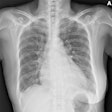Updated requirements for fluoroscopy systems sold in the U.S. should reduce the number of radiation burns to patients, according to federal regulators, but it will also raise the price of many fluoroscopy machines.
Officials from the FDA's Center for Devices and Radiological Health are awaiting comment this week from the National Electrical Manufacturers Association (NEMA) members on the financial impact of the proposed standards. To initiate the feedback process, CDRH engineers and physicists have publicized their own, deliberately inflated estimate of the potential cost of implementing the new requirements.
The CDRH's "Assessment of the Impact of the Proposed Amendments to the Diagnostic X-ray Equipment Performance Standard addressing Fluoroscopic X-ray Systems" estimates that manufacturers would spend around $28 million in non-recurring costs, such as equipment redesigns, and $43 million in annual recurring costs to comply with the nine proposed regulations.
Based on the roughly 4,200 new fluoroscope installations reported to CDRH each year, those estimates would add an average of $10,000 to the cost of a new system. But officials expect the actual increase to be much lower than the CDRH's worst-case scenario.
"Those numbers are all very high," said Thomas B. Shope, Ph.D., regarding the multimillion-dollar figures generated by CDRH's Fluoroscopy Working Group. "Some fluoroscopes today already come with all the features we're proposing."
But the new standards will apply to all fluoroscopy systems, from $2 million cardiac catheterization labs to $40,000 mobile C-arms, said Shope, a special assistant in the office of science and technology at CDRH.
"It will be a more significant impact percentage-wise on the small C-arms," Shope said. Still, he hopes buyers won't rush to get a new system before 2002, when the proposed changes will likely take effect.
"If [fluoroscope purchasers] are concerned about patient safety, they would probably want to have the features on the new system," Shope said.
The most important and expensive requirement is that all new fluoroscopy systems display radiation exposure information to the operator, including the entrance air kerma rate, cumulative air kerma, and total irradiation time during a procedure.
"The physician typically hasn't had immediate access to this information," Shope noted. "It's immediate feedback: If you see a number that's 10 times higher than you're used to seeing, that means something is wrong with the machine."
In a move toward international standards, exposure data will be displayed in gray (Gy) units rather than rads or roentgens. Also, fluoroscopes will emit an audible signal every five minutes during the radiation exposure.
The requirements are intended to address a rise in radiation skin burns as fluoroscopy has moved from primarily diagnostic use to longer-duration interventional procedures.
About 100 fluoroscopy-induced injuries have been reported to CDRH or in the medical literature over the last decade, out of an estimated 700,000 fluoroscopic procedures performed during that period. But the small number still represents a big increase over early decades.
"[Fluoroscopy-induced burns] were unheard of before 1990 because nobody was doing these kinds of interventional procedures," said Shope.
Shope believes that additional injuries may have gone unreported, and that even a small number is unacceptable, given that painful and debilitating radiation burns are largely avoidable. The injuries can also lead to malpractice lawsuits, Shope noted, citing a $1 million judgment in one litigated case.
Federal officials put out a public health advisory on the problem in 1994, and further publicized the issue with presentations at the RSNA conference and in radiology journals. But the CDRH has continued to receive reports of injuries, driving interest in equipment upgrades that would address the problem, Shope said.
Shope believes that adding radiation exposure tracking to fluoroscopy systems will also enable healthcare facilities to refine exposure expectations for various procedures, and for spot operators who may be working particularly slowly or quickly.
The CDRH's Fluoroscopy Working Group estimated that it would cost less than $8,000 per system to add the radiation exposure display, based on a currently available fluoroscope add-on from Pimnet Clinical Micro Systems of Arlington, VA, that costs about $6,000.
The working group considered and rejected several alternatives to the costly requirement, according to the draft document. Displaying "dose-area product" rather than air kerma was rejected, as the latter was judged more relevant in providing immediate information related to the potential for skin injuries, fetal mental retardation in pregnant patients, or radiation-induced cancer morbidity and mortality.
Making no change was also rejected as an option. "As many fluoroscopic procedures now require extended periods of exposure, it has become widely recognized that users need tools that will enable them to be aware of the amount and extent of fluoroscopic exposure during the procedure so that appropriate clinical decisions can be made," the document states.
Other proposed requirements include the provision of better instruction manuals regarding the many modes of operations found on modern fluoroscopes, as well as guidance on the new air kerma displays; an increased minimum half-value layer; improved x-ray field limitation; and a mandatory "last-image hold" feature on all new fluoroscopic systems.
"I think [last-image hold] is a very valuable dose-reduction feature because it provides a way to see an image and think about what to do without irradiating the patient," Shope said, adding that around 85% of new fluoroscopy systems now come with the feature.
The CDRH proposal represents the first significant change to fluoroscopy equipment standards since they were first published in 1974, Shope said. NEMA feedback on the cost implications is expected on August 18.
By Tracie L. ThompsonAuntMinnie.com staff writer
August 16, 2000
Let AuntMinnie.com know what you think about this story.
Copyright © 2000 AuntMinnie.com


















